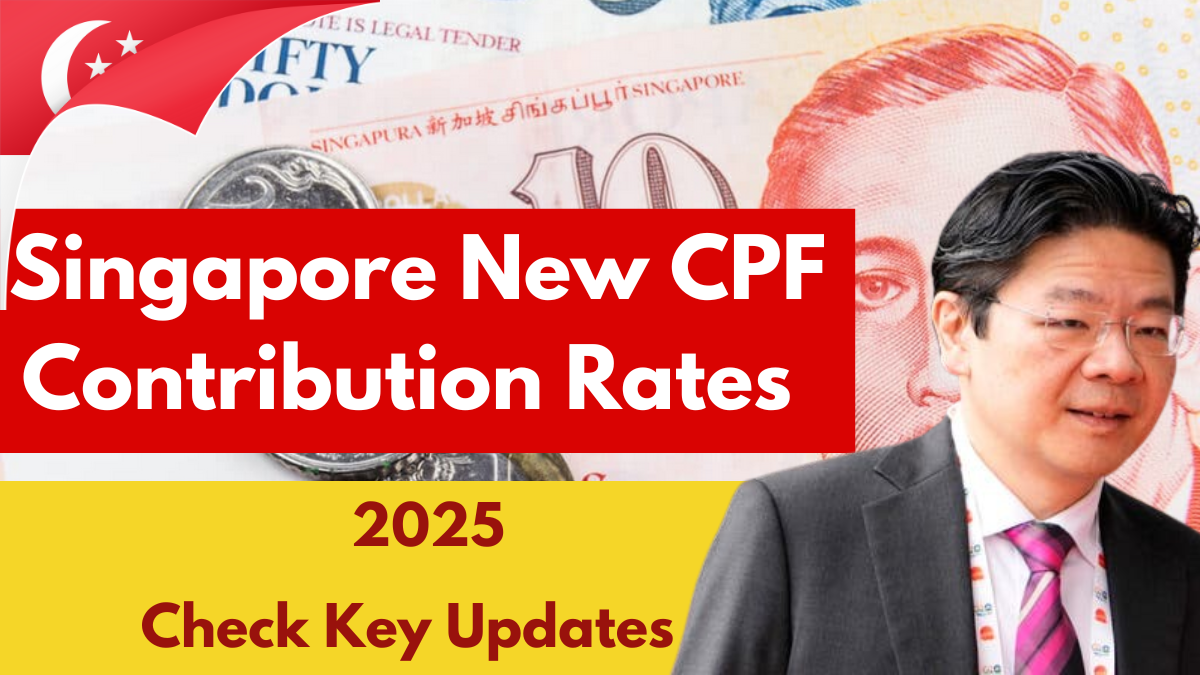The Central Provident Fund (CPF) is a mandatory social security savings scheme regulated by the CPF Board in Singapore. It is designed to provide financial security for employees by ensuring adequate savings for retirement, healthcare, and housing. CPF contributions are jointly made by employers and employees as a percentage of wages, which are classified into Ordinary Wages (OW) and Additional Wages (AW).
Several key updates have been introduced to the CPF scheme in 2025, impacting contribution limits, interest rates, and allocations for senior workers. This article provides an in-depth look at the CPF system, its structure, recent updates, and their implications for employees and employers.

CPF Contribution Structure
CPF contributions are classified based on the type of income:
1. Ordinary Wages (OW)
These are the fixed monthly earnings employees receive, including basic salary, overtime pay, and regular allowances. As of January 2025, the OW ceiling has been increased to SGD 7,400 per month. This means CPF contributions will be calculated only on the first SGD 7,400 of an employee’s monthly salary.
2. Additional Wages (AW)
AW comprises non-recurring payments such as annual bonuses, commissions, and performance incentives. CPF contributions for AW are capped annually, determined by the formula: AW Ceiling = Annual CPF Salary Ceiling (SGD 102,000) – Total OW subjected to CPF for the year.
3. CPF Annual Salary Ceiling
The CPF annual salary ceiling remains at SGD 102,000 in 2025, ensuring contributions apply only to earnings up to this limit.
CPF Account Structure and Their Purposes
CPF savings are allocated into four distinct accounts, each serving a specific purpose:
| CPF Account | Purpose |
|---|---|
| Ordinary Account (OA) | Used for housing, insurance, investments, and education. |
| MediSave Account (MA) | Dedicated to medical expenses and health insurance. |
| Special Account (SA) | Designed for retirement savings with higher interest rates. |
| Retirement Account (RA) | Formed at age 55 to provide monthly payouts in retirement. |
Employer and Employee Contribution Responsibilities
CPF contributions are a shared responsibility between employers and employees:
- Employers are required to contribute their portion alongside the employee’s share each month.
- Employees’ CPF contributions are automatically deducted from their salaries.
- These contributions are mandatory for Singapore Citizens and Permanent Residents (PRs) earning more than SGD 50 per month.
Key CPF Updates for 2025
1. Increase in OW Ceiling
Effective January 2025, the OW ceiling has increased from SGD 6,800 to SGD 7,400, allowing higher CPF contributions for employees with higher wages. This facilitates greater savings for retirement and healthcare.
2. Interest Rates and Additional Benefits
CPF savings continue to benefit from competitive interest rates to encourage financial growth. The interest rate for Special, MediSave, and Retirement Accounts (SMRA) increased to 4.14% in Q4 2024.
Additional interest rates apply based on age and CPF balance:
| Age Group | CPF Balance Range | Additional Interest Rate |
| Below 55 years | First SGD 60,000 | 1% |
| 55 years and above | First SGD 30,000 | 2% |
| 55 years and above | Next SGD 30,000 | 1% |
3. Adjustments for Senior Workers
From January 2025, CPF savings in the Special Account (SA) of senior workers are being transferred to their Retirement Account (RA). This change ensures improved monthly payouts post-retirement. If the RA has already reached the Full Retirement Sum (FRS), new contributions will be redirected to the Ordinary Account (OA).
Revised CPF Contribution Rates (2025)
The table below outlines the revised CPF contribution rates based on age:
| Age Group | Total Contribution Rate | Employer’s Share | Employee’s Share |
| 55 and below | 37% | 17% | 20% |
| Above 55 to 60 | 32.5% (+1.5%) | 15.5% (+0.5%) | 17% (+1%) |
| Above 60 to 65 | 23.5% (+1.5%) | 12% (+0.5%) | 11.5% (+1%) |
| Above 65 to 70 | 16.5% | 9% | 7.5% |
| Above 70 | 12.5% | 7.5% | 5% |
CPF Contributions for Singapore Permanent Residents (SPRs)
Singapore Permanent Residents (SPRs) contribute at graduated rates in their first two years to ease the transition before contributing at full rates.
First-Year SPR Graduated Rates
| Age Group | Total CPF Contributions | Employee’s Share |
| 55 and below | 4% + 0.15(TW – $500) | 0.15(TW – $500) |
| Above 55 to 60 | 4% + 0.15(TW – $500) | 0.15(TW – $500) |
| Above 60 to 65 | 3.5% + 0.15(TW – $500) | 0.15(TW – $500) |
| Above 65 | 3.5% + 0.15(TW – $500) | 0.15(TW – $500) |
Conclusion
The CPF scheme plays a crucial role in securing the financial future of Singaporean employees. With recent updates in wage ceilings, interest rates, and senior worker allocations, the CPF system continues to evolve, providing greater security and flexibility for all members.
| CPF Contribution Calculator | Click Here |
FAQs
1. What happens if my salary exceeds the CPF salary ceiling?
CPF contributions will be calculated only up to the applicable ceiling. Any excess earnings will not be subjected to CPF contributions.
2. Can I voluntarily contribute more to my CPF?
Yes, employees and self-employed individuals can make voluntary CPF contributions to enhance their retirement savings.
3. How do I calculate my CPF contributions?
CPF contributions are determined based on the OW and AW ceilings. The CPF Contribution Calculator on the CPF Board’s website can be used for accurate calculations.
4. Are CPF contributions compulsory for all employees?
CPF contributions are mandatory for Singapore Citizens and PRs earning above SGD 50 per month.
5. How are CPF funds allocated if I am above 55 years old?
CPF contributions for senior workers prioritize the Retirement Account (RA) to ensure steady retirement payouts. Any excess contributions after meeting the FRS will be allocated to the Ordinary Account (OA).
For More Information Click Here
